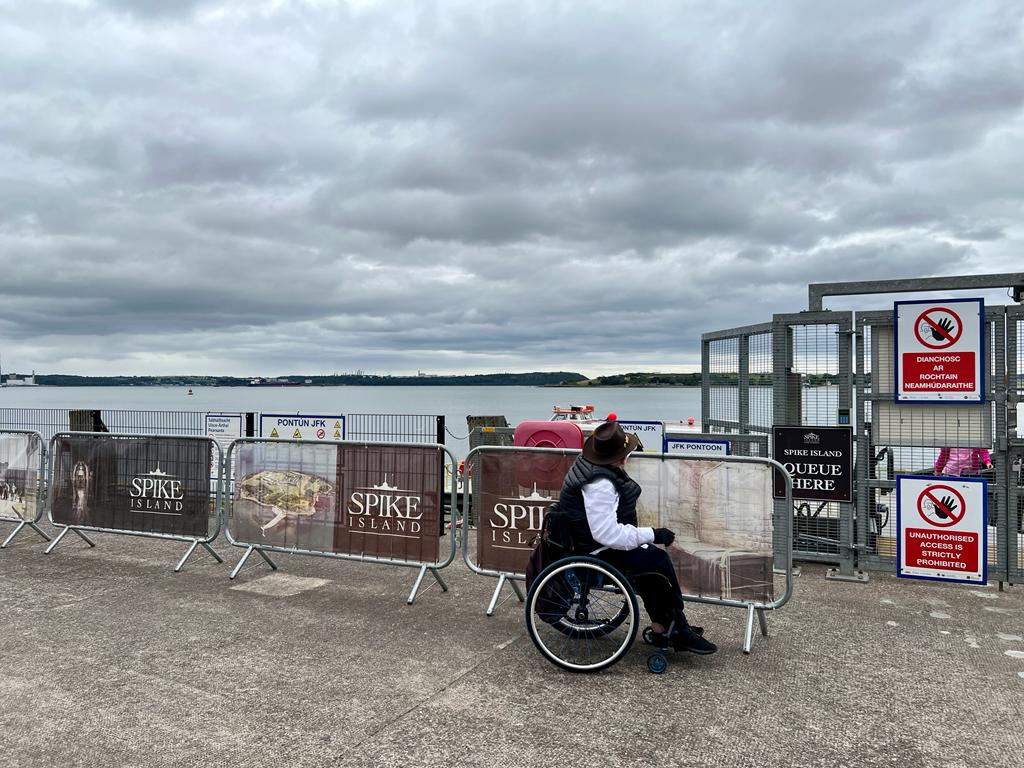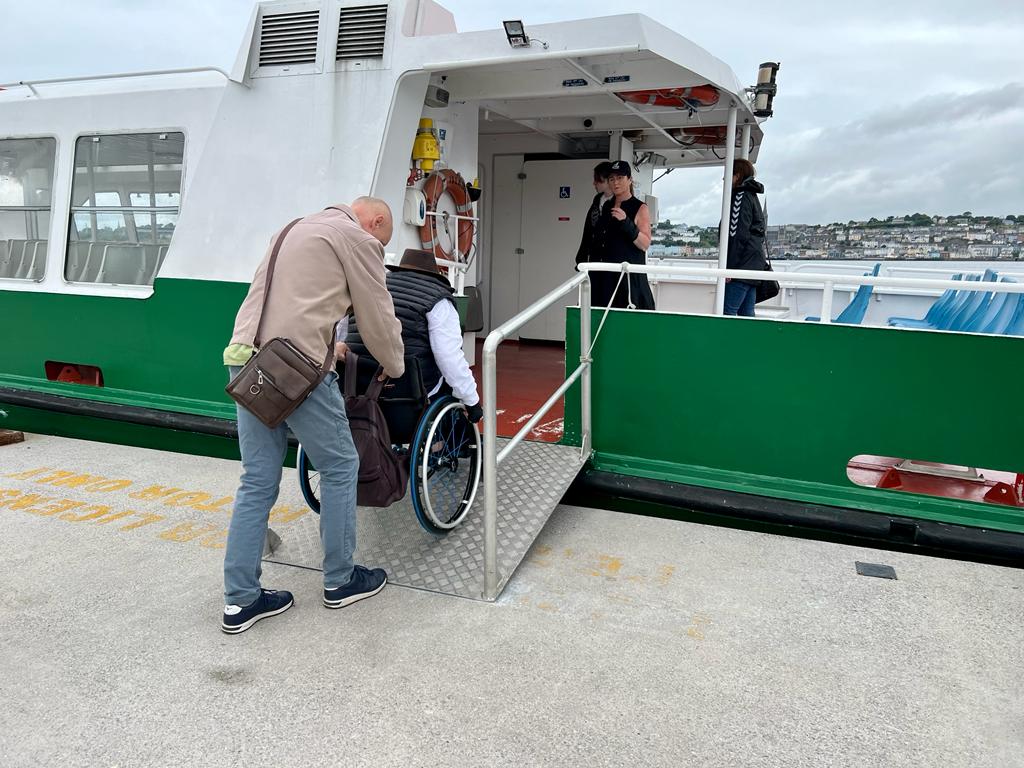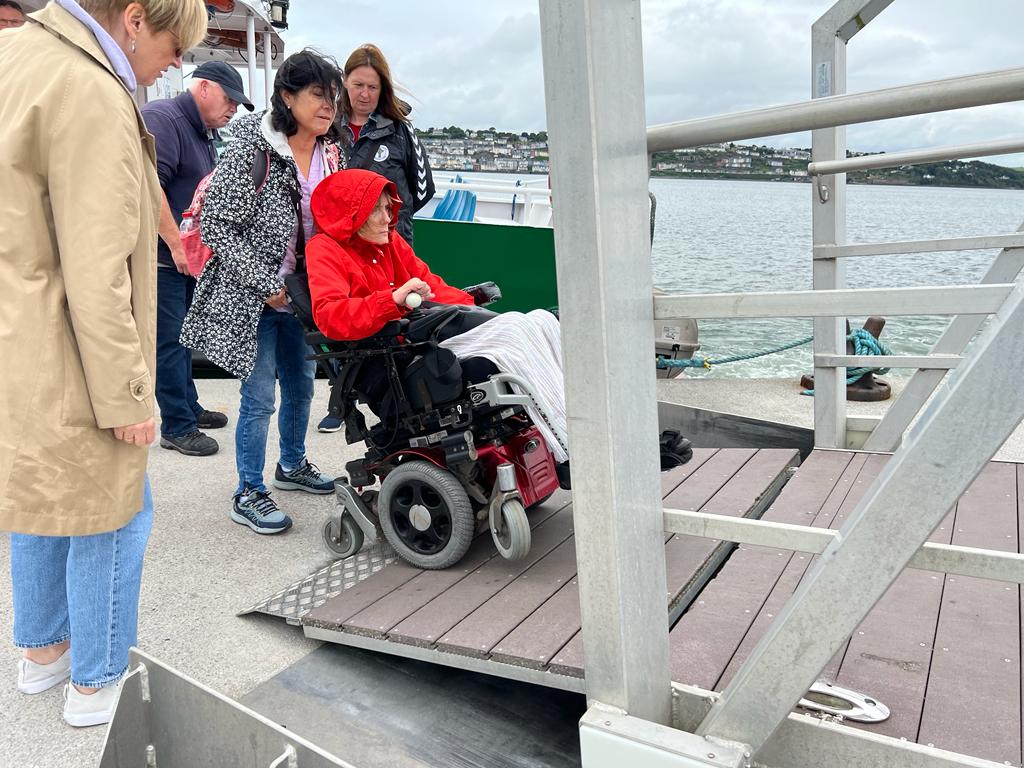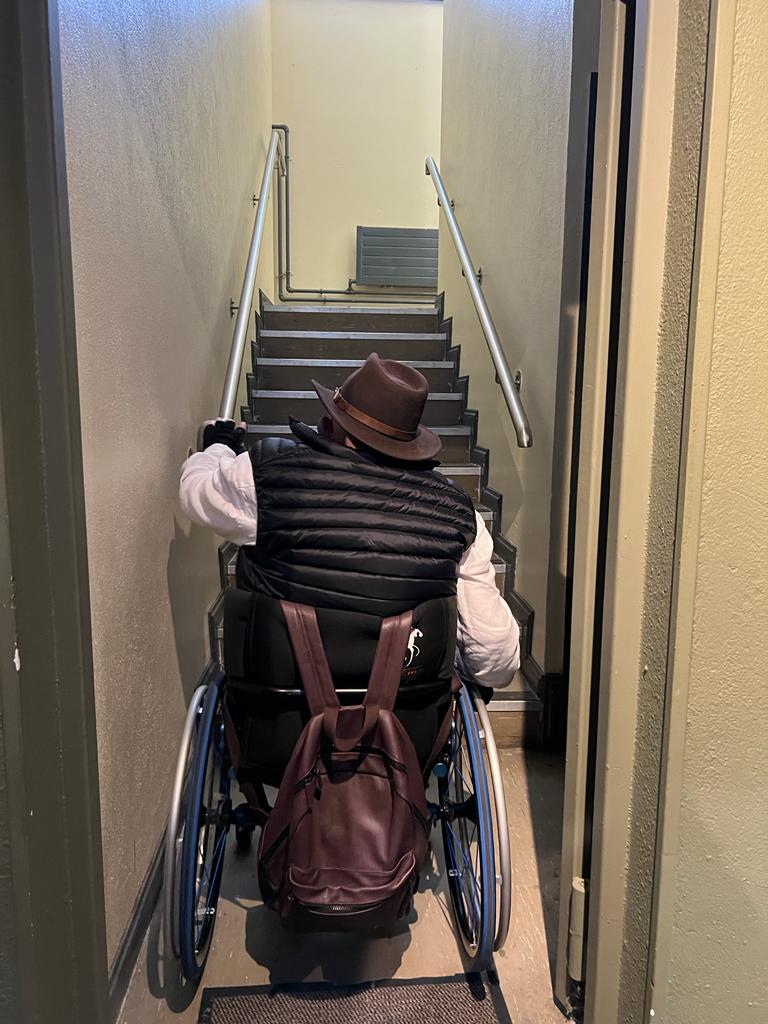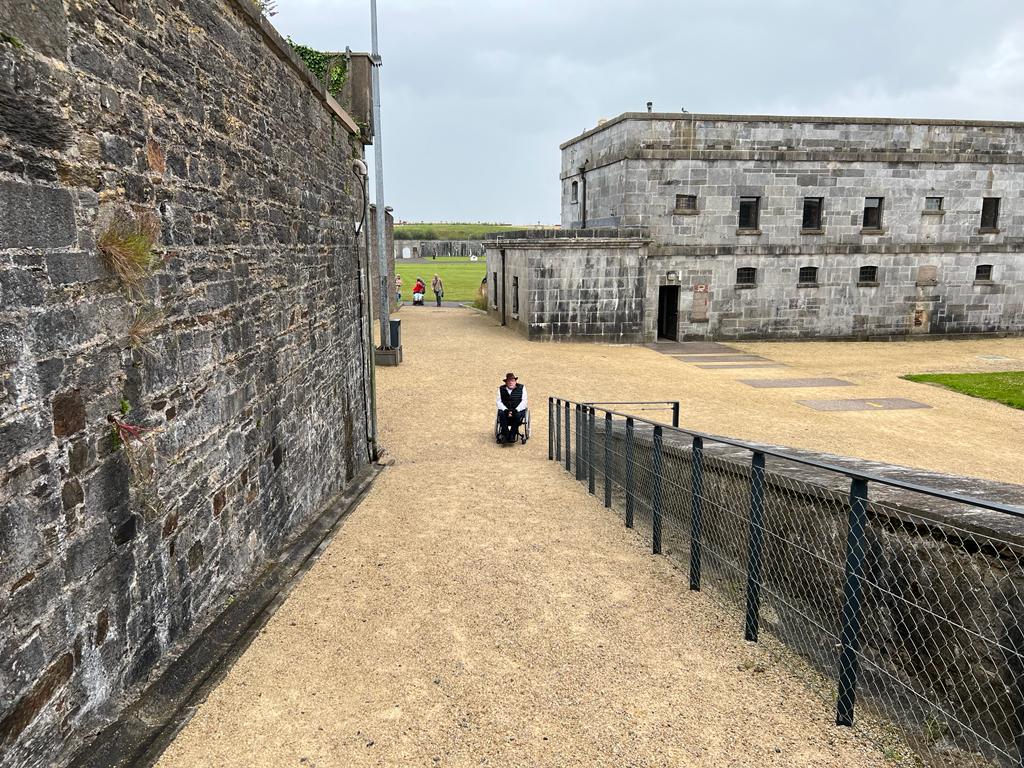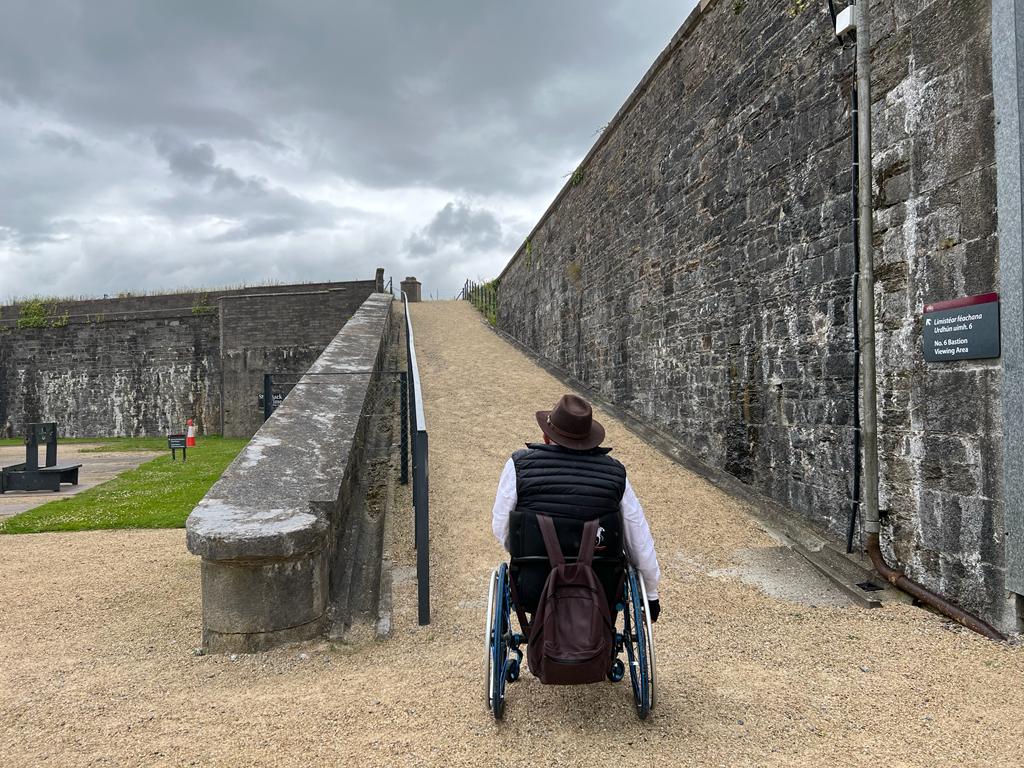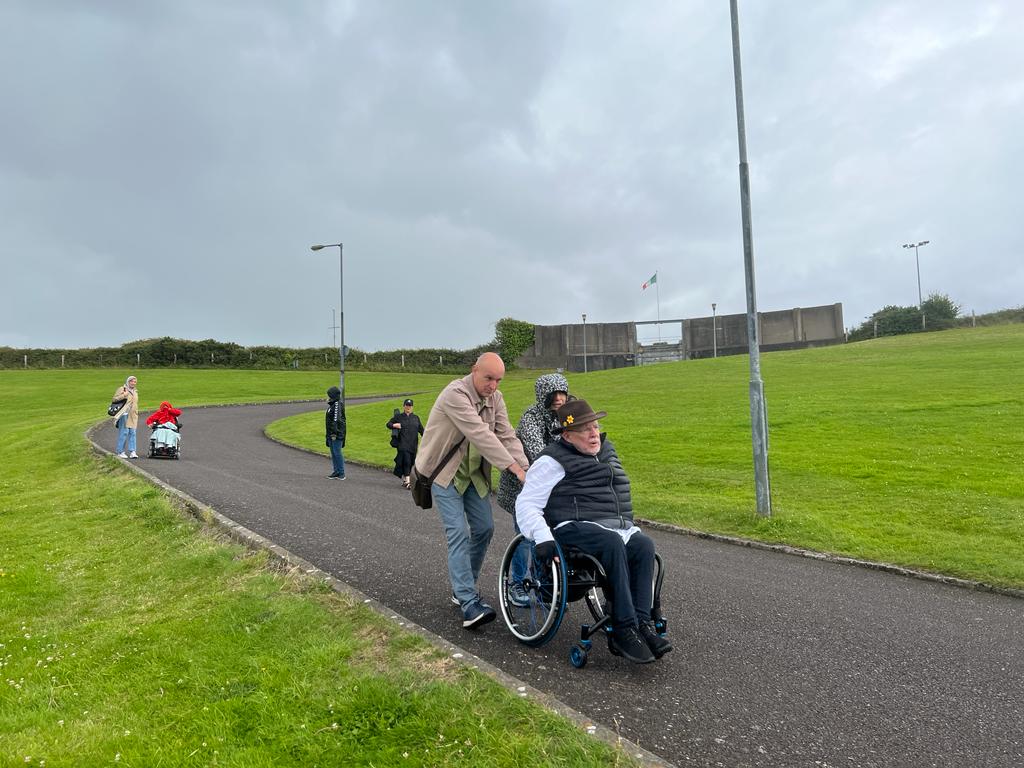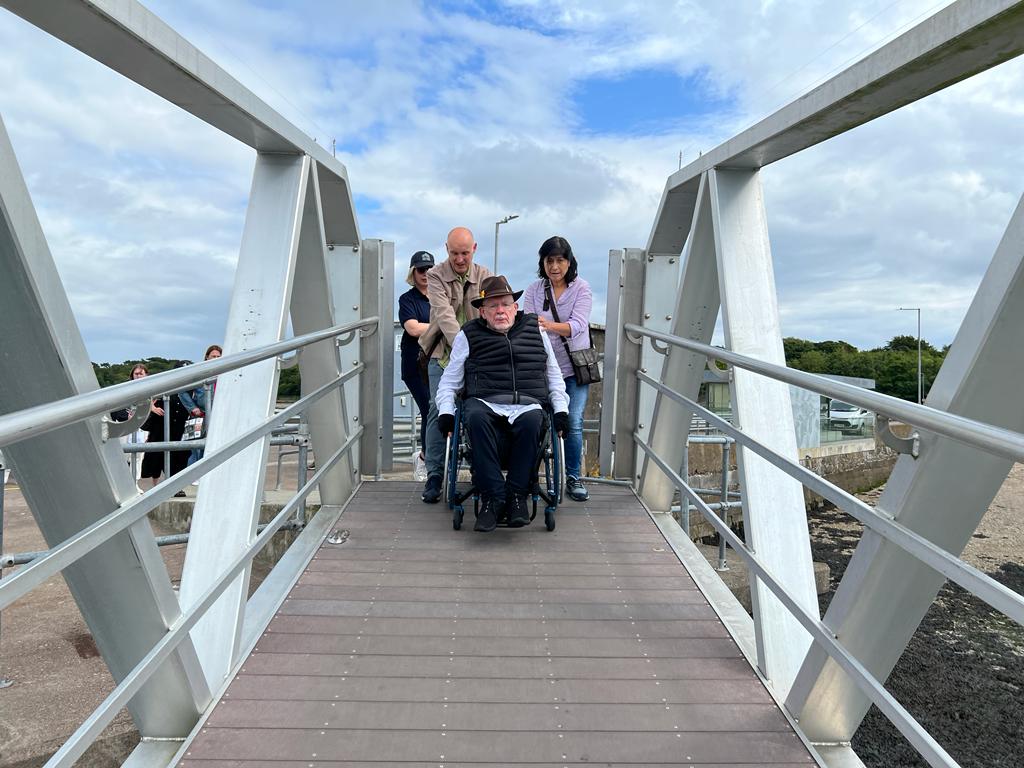Visiting historical sites and landmarks is a popular activity for many people, but for wheelchair users, it can also be a challenge. However, with the right accessibility measures in place, wheelchair users can also enjoy these experiences.
We will explore the experience of two wheelchair users, Nicola and Michael, as they visited Spike Island, a popular tourist destination known for its rich history and stunning views. Through their experience, we will gain insight into the accessibility of the Island and the obstacles they faced. Michael was Kay McShane’s husband, who was a prominent athlete and an advocate for people with disabilities. She was board member of BCIL and spent her life fighting for equality and against discrimination.
Due to the large hill at The Spike Island and its lack of accessible transport wheelchair users had difficulties in reaching the exhibition area. Even though they were assisted by others, Michael and Nicola had a hard time getting on and off the ferry. Providing a bus service that is wheelchair accessible to the island would make it easier for disabled individuals to access the facility. This would allow disabled tourists to be driven up the hill to the exhibition area comfortably and can greatly enhance accessibility and inclusivity for all visitors.
The inaccessibility of Spike Island led to the decision to cancel the exhibition in memory of Kay Shane. However, BCIL plan to host an event in her honour next year while promoting inclusion and equal access for everyone, ensuring that her legacy is honored in a way that reflects her values and commitment to accessibility and inclusion.
Spike Island would be hard accessible to the very many disabled people in Ireland who want to be allowed to participate fully in the social and cultural life of our community.
The images shown below demonstrate The Spike Island’s inaccessibility:
